Tanks are neither obsolete nor ineffective, despite their poor performance for Russia in Ukraine.
The issue is that on the high tech battlefield of today, they need to be used in a combined arms manner, closely coordinating with infantry, artillery, drones and signal intelligence. Russian troops have not been able to muster that capability and their tanks have suffered. In addition Russian design makes its tanks vulnerable to hand held missiles and other armaments. The result has been catastrophic for Russian forces - and their once fearsome reputation. JL
Stefan Korshak reports in The Kyiv Post:
Russia, the country with theoretically the most massive tank fleet in the world, was reduced to sending a 41 refurbished T-62 tanks intended for export to Africa, to shore up (its forces) in Ukraine. Russian tanks have proved extremely vulnerable to missiles like the Javelin and the NLAW. "We welded grates on top of our tanks." Dubbed "cope cages" by NATO and "BBQ grills" by the tankers themselves, the grates didn’t stop the missiles. (Plus) "tanks are easy to find with a drone and one that isn’t moving is pretty easy to hit with a munition…you can drop a grenade down a hatch or blow off a tread."Russian tank captain Aleksei Ukhachev, speaking in a Moskovsky Komsomolets magazine article, tore into Kremlin leadership for sending him and his crews to war aboard vehicles grossly vulnerable to high tech missiles like U.S.-made Javelin and the Swedish/British NLAW.
Both hand-held weapons, the missiles’ "fire-and-forget" firing systems enable the shooter to press a trigger and hide immediately, as the munition flies itself to the target and attacks the tank’s roof, where the armor is thinnest.
Ukhachev said in the May 28 article that "We welded grates on top of our tanks but we wound up removing them. In the first place the grates cause problems: the machine gun won’t rotate, antennae get caught up in the grate, then the radio burns out and you have no communications".
On the battlefield, it turned out, the grates - dubbed "cope cages" by military observers in Europe and America, and "BBQ grills (мангали)" by the tankers themselves - didn’t stop the missiles.
Even worse, Ukhachev added, if a crew needed to bail out of a tank with a cope cage on the roof, the metal grate trapped crewmen in the turret.
The Russian military information platform Voenniy Osvedomitel came to the same conclusion in a Dec. 26 editorial: "As predicted, this uneducated and stupid idea (cope cages), in combat conditions, turned out to be absolutely senseless …The tankers threw them out, and now these protective grates have disappeared."
"There is a long history of tank crews adding things to their tanks, but very rarely has it turned into a net positive," Nicholas Moran, former U.S. Army armor officer and modern tank warfare historian, told Kyiv Post. "Put simply, if the engineers who know a lot more about tank design and armor thought it wasn't worth putting additional purpose-designed armor somewhere, it's unlikely that whatever an inexperienced tank crew comes up with will prove to be a net benefit."
Another problem for Russian tankers in future battles is the Armed Forces of Ukraine (AFU) . Ukrainian anti-tank gunners had been skilled for years thanks to practicing in fighting in Donbas from 2014-2021, and by the end of 2022 they were armed to the teeth with a dazzling array of anti-tank technology: precision-guided howitzer shells, mines scattered by artillery rockets, strike drones, wire-guided missiles launched from a pick-up truck, and artillery rockets able to hit a two meter wide target at ranges of up to 80 km.
Ukraine’s home-grown Stuhna missile has proved to be just as effective and a lot cheaper ($30,000 vs. $100,000 for the American Javelin).
All that firepower has added up.
According to the Netherlands-based research group Oryx, the Russian military had by Dec. 30 suffered confirmed losses of 934 vehicles destroyed, 70 damaged, 60 abandoned and 529 captured in various states of repair by the Ukrainians.
A neutral watch agency, Oryx accepts only confirmed evidence of a loss, usually a credible photograph of the written-off tank in question.
According to official Ukrainian army kill claims as of Jan 1., Kyiv’s troops by all means over 2022 wrote off 3,031 Russian tanks.
If accurate that loss count exceeded the total number of tanks the Kremlin had in the field - about 2,800 according to the International Institute of Strategic Studies (IISS) - across the entire Russian army, from Poland to the Pacific Ocean, at the start of its current war on Ukraine.
Russia’s ability to field replacement tanks looks grim.
Russia’s main tank production facility, the Nizhny Tagil UralVagonZavod factory, even prior to the war was only capable of manufacturing or upgrading 20-30 modern standard tanks a month, Ukraine’s Defense Express magazine reported.
Most advanced tank add-ons needed by UralVagonZavod, like the Sosna-U thermal site, are close to impossible to install because key sub-components are not produced in Russia, and Western sanctions ban import.
Russia’s national tank reserve, alleged 8,000 vehicles at the start of the war, has since February fallen flat on its face. Russian state media have filed report after appalled report that thousands of tanks supposedly held in reserve in depots deep inside the country, had been looted to melt down the scrap metal of their hulls.
In late March 2022 the commander of the 13th Guards Tank Regiment, according to Ukrainian intelligence reports, committed suicide after learning 90 percent of the tanks his unit was supposed to go to war with were, in fact, rusted hulks.
By June, Russia, the country with theoretically the most massive tank fleet in the world, was reduced to sending a reported 41 refurbished T-62 tanks originally intended for export to Africa, to shore up the Kherson sector in southern Ukraine.
By October of last year the Ukrainians had overrun Kherson and by their own count captured or destroyed at least 38 of the mostly obsolete T-62s.
Russia’s top-end T-14 Armata tank, touted by the Kremlin as a world-beating weapon superior to anything NATO is likely to field in the next decade, has driven across Red Square in multiple parades but, even Moscow supporters point out, has yet to set tread on a Ukrainian battlefield and is unlikely to any time soon.
"Rostex (Russia’s central arms manufacturer) has stolen all the money from tank production, nobody is going to build them, and as far as advanced technologies, it’s not possible in conditions of sanctions," wrote pro-Russia activist Anatoly Shariy, a multi-million follower blogger in Ukraine and Russia both, in a Dec. 23 comment.
Russian propagandist Vladimir Solovyev on Dec. 25 aired a report on state television showing the giant Armata being put through their paces in crew training.
Solovyev hinted they soon might be fighting in Ukraine, but Shariy suggested the report was faked and that hapless Russian tankers will, as before, be left by Russian high command on their own, without Armata tanks or any other modern counters to NATO weaponry.
The latest make-do surfaced on Ukrainian media on Dec. 24: a Russian tank crew was photographed with steel weights looted from a John Deer tractor hung on the side of a T-80 tank as hopeful extra flank protection.
Moran said that, even with the anti-tank arsenal that the AFU’s has, drones overhead are probably a Russian tanker’s single biggest future headache: "I would expect to see an increase in ancillary technologies like counter-drone. It is that which is hurting Russia more than the actual tank design itself."
Ukrainian drone operators agreed.
"The real problem for tanks is they break," private combat drone developer Vadym Yunik told Kyiv Post in an interview. His volunteer group, Aerorozvidka, is one of the biggest suppliers of crowd-sourced drone tech to the Ukrainian military, delivering commercial drones, some modified to carry grenades or anti-tank rounds, directly to AFU infantry.
"In this war, anything that sits still is vulnerable," Yunik said. "The only way to be safe is not to be seen, and if you are seen to move away fast…tanks are easy to find with a drone and one that isn’t moving is pretty easy to hit with a munition…you can drop a grenade down a hatch or blow off a tread."
Screen grab from a Russian state television news report claiming that the Kremlin’s latest and heaviest tank, the T-14 Armata, will soon see action in Ukraine.Kremlin critics and independent military observers have said the deployment is unlikely because the tank is too heavy and expensive for Moscow’s generals to want to use it, and also because the Russian arms industry is almost certainly incapable of manufacturing replacements. Screen grab from Twitter @TaurenQ
Screen grab from Russia state television report on Russia’s key UralVagonZavod tank factory.
Due to Western sanctions production capacity has reportedly been around 20-30 vehicles a month, roughly one tenth the pace Russia has lost tanks to Ukraine’s military in the war so far.
Screen grab from an article in Defense Express dated Nov. 23, 2022.
The above two images posted on the Voina - Ukraina Rossiya Bakhmut Telegram channel on Dec. 28.
According to the site, some Russian tankers are hanging steel counterweights looted from John Deere harvesters on their vehicles, as additional protection against Ukrainian attacks from the side. The tank pictured is a T-80.
Russian tank with a cope cage, destroyed in Ukraine. Source: Wikipedia
Russian T-72B tanks equipped with post-market cope cages. Undated, Krasnodar Region, Voenny Osvedomitel news platform.
Screen grab from the Russian Federation state propaganda site SolovyevLive Dec. 25 news video reporting that Russia’s most advanced tank, the T-14 Armata, is "heading to the West".
Military analysts say the 55-ton vehicle would likely defeat most Ukrainian tanks in a face-to-face slugout, but would, like all other heavy weapons in the Russo-Ukraine war, be mostly vulnerable to missile ambushes and artillery strikes.
Russian government critics have claimed the report was fake news.


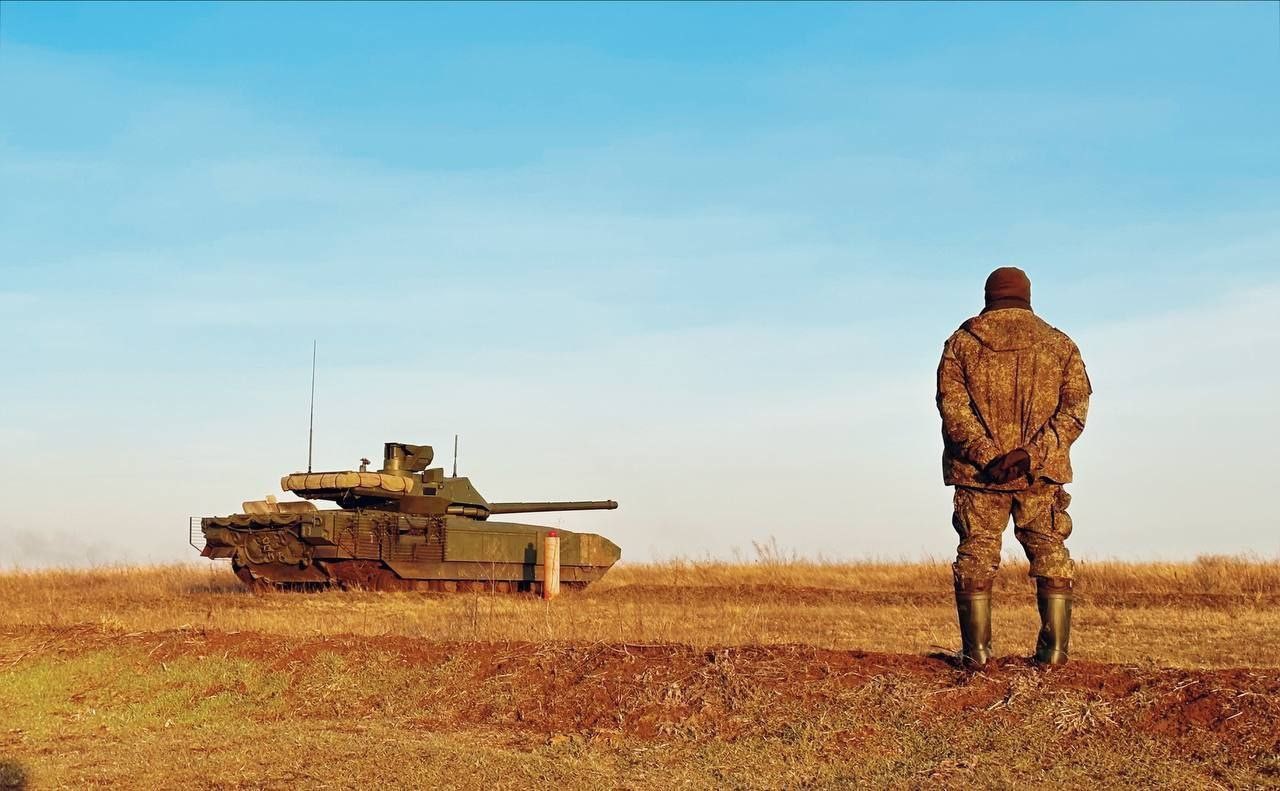
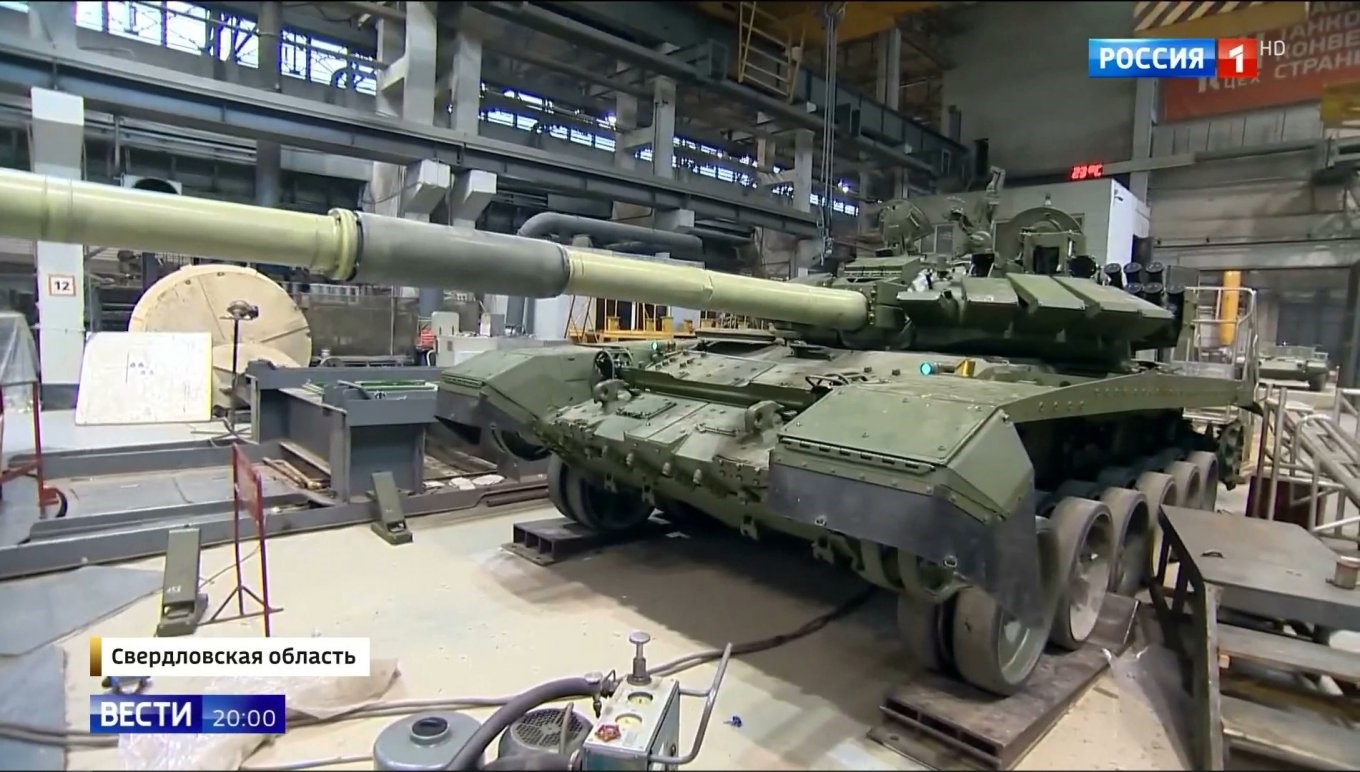
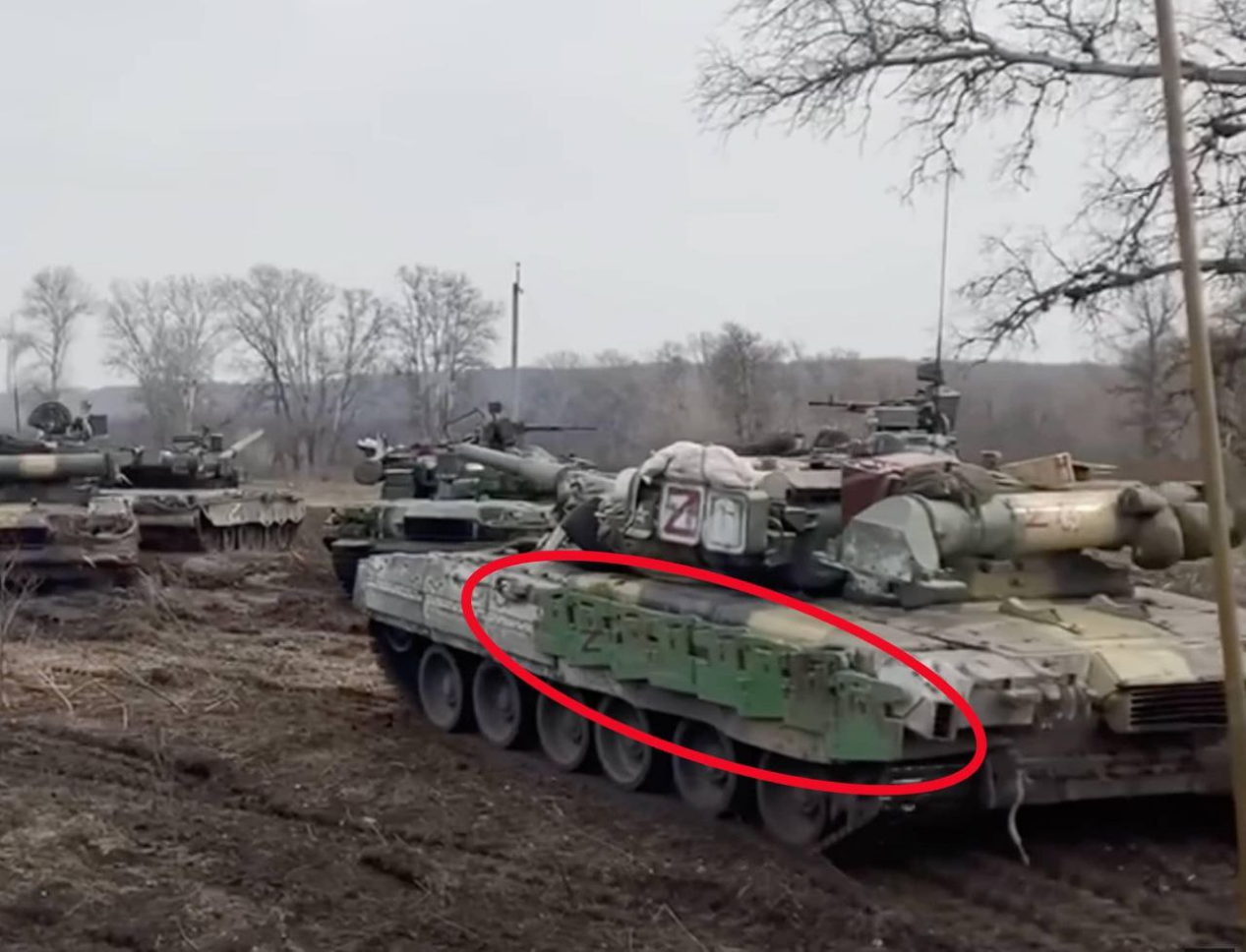

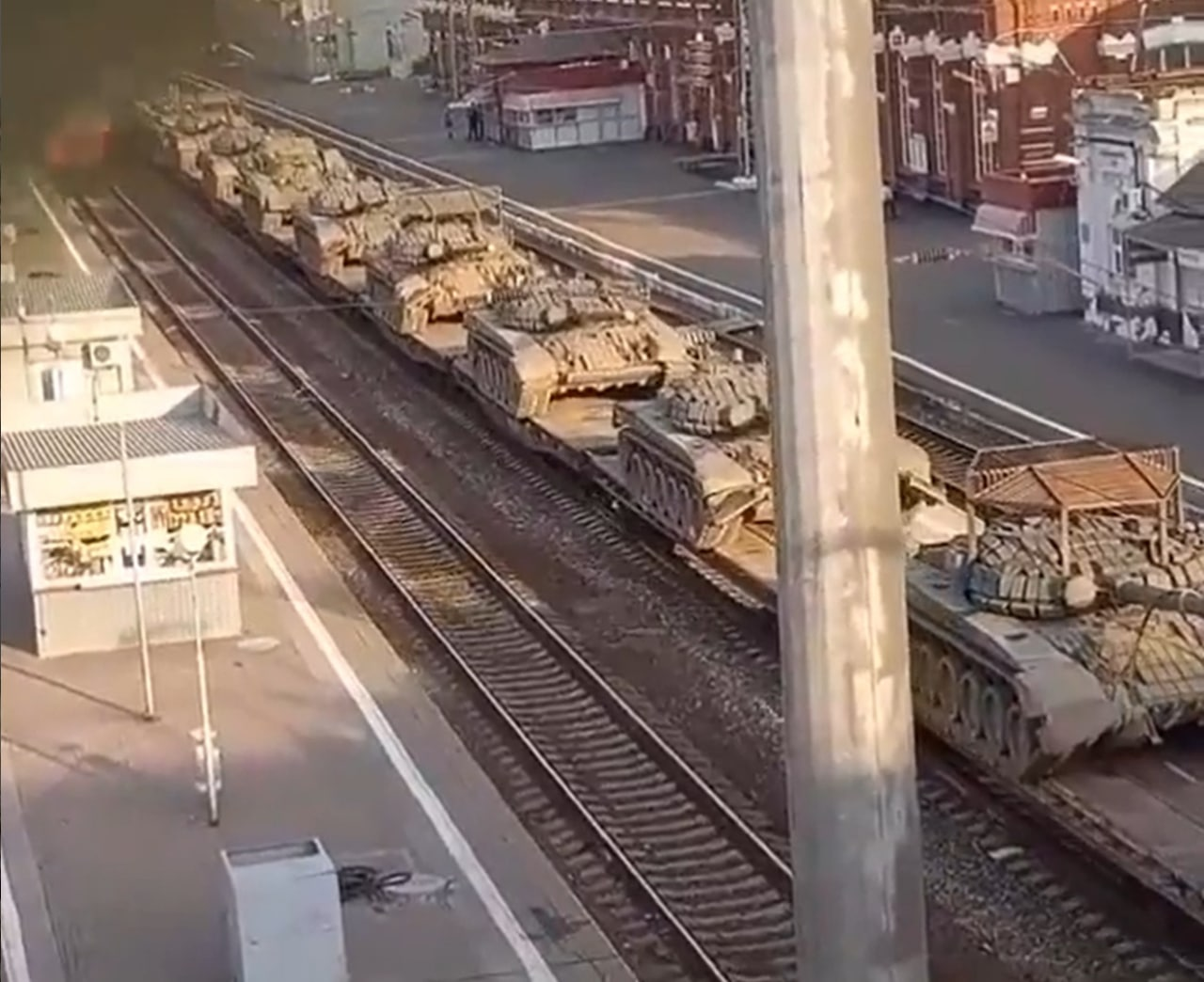
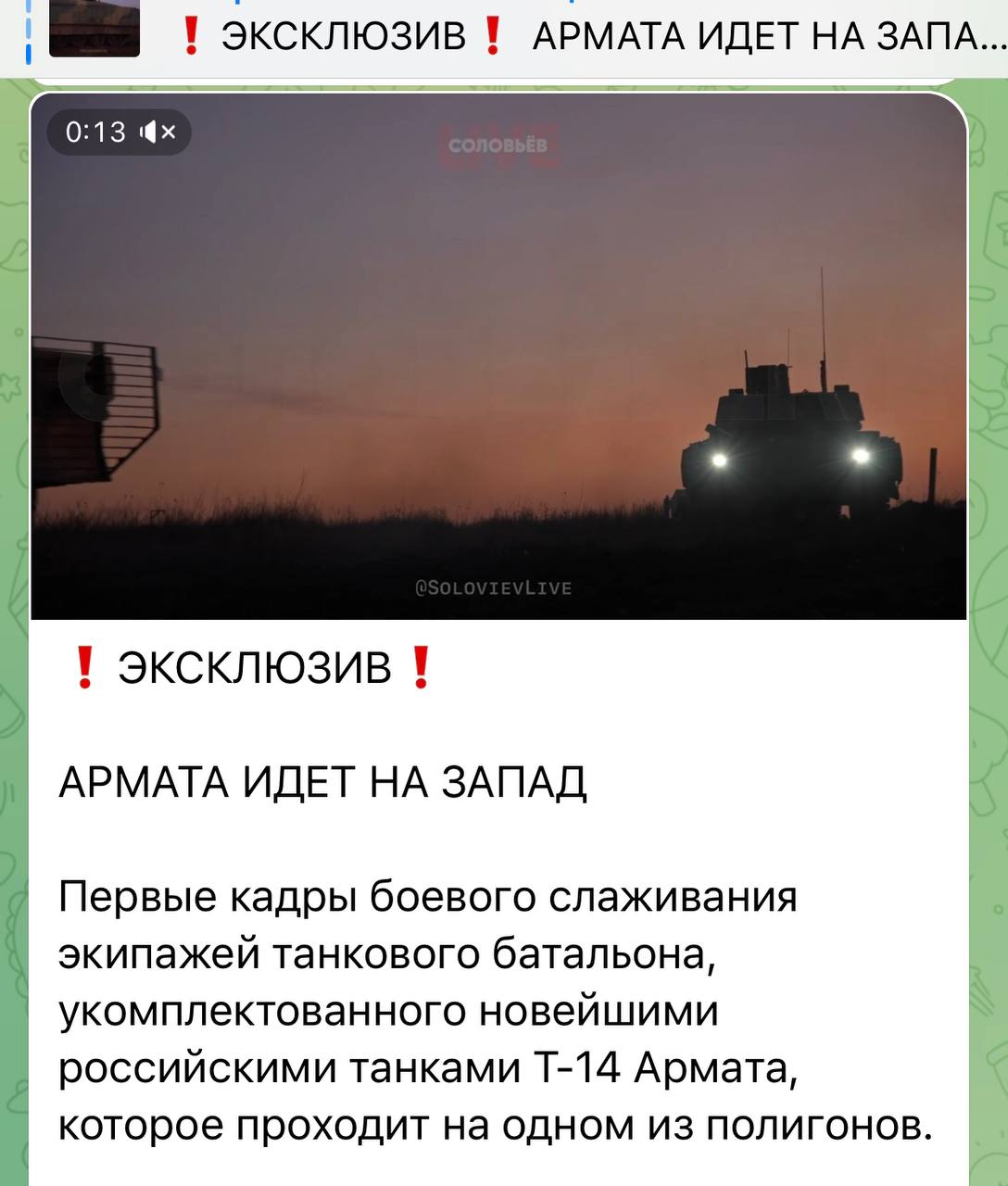


















3 comments:
Opportunities are very rare these days because of the high rate of spamming existing on the internet right now but when we find those that are legit we should share their good deeds to prevent people from falling victim of spam. I saw someone who made a review about how she met this FX broker, who provide her with the best trading signals and I took the risk. I started with just $2000 to test the system, they help me trade with my deposit and after 7 working days I made a withdrawal of $20,300. I was so amazed with the profit earned, I told Mr Mark Toray I was gonna refer him and his company to a lot of friends, you can contact him for all FX trading needs via his email marktoray8@gmail.com or telegram @mark4toray_fx You will be glad you did it.
I always bought the idea of investing in cryptocurrency but I didn’t go through the right process and I lost all my money to a fake cryptocurrency investment platform. I didn’t do enough research and I was scammed of my hard-earned money after falling victim to a cryptocurrency investment scam. I made all efforts to get back my money but to no success, I contacted the authorities as well but they couldn’t do anything to recover my funds until I was told about Spyweb Cyber Security Services, a cryptocurrency recovery company that has helped other scam victims recover their funds. I contacted them immediately and provided all the necessary information needed to help them with their investigation. Spyweb Cyber Security Services was able to recover my cryptocurrency funds and was able to track down those scammers. I’m truly grateful for their reliable and professional service. Spyweb Cyber is the best approach if you want to recover your locked funds, and stolen cryptocurrencies. Their contact information is as follows
Email - Spyweb @ cyberdude .com
Whats App - +1323 (904-8824)
My name is Daniel Harris, and I’m from Perth, Australia. In early 2024, I fell victim to a fake crypto mining company called Aurum Mining Solutions. They looked professional, they had a sleek website, convincing consultants, and even fake ASIC credentials. I invested gradually, and over time, I put in a total of $87,000 AUD, thinking my profits were growing.
Then one day, the website disappeared. The consultant vanished. I couldn’t log in or get answers. It was crushing, I had been completely scammed.
I reported it to the authorities, but I didn’t expect anything to come of it. Then I heard about Morphohack Cyber Services. I reached out, and they were incredible fast, professional, and honest. They tracked the stolen Bitcoin and helped me recover everything I lost.
Most people never see their money again after a crypto scam, I’m lucky I found Morphohack. They gave me a second chance and proved that real recovery is possible.
E-Mail: Morphohack@cyberservices.com
Post a Comment